When it comes to designing and manufacturing footwear, ensuring quality and safety is not just a matter of brand reputation—it’s a critical responsibility to the consumer. Footwear testing serves as the backbone of this commitment, where advanced methodologies and rigorous standards are applied to assess a shoe’s durability, comfort, performance, and safety. Whether it’s testing for slip resistance, tensile strength, or material integrity, each process plays a pivotal role in delivering a product that meets both industry regulations and consumer expectations. This article will explore the multifaceted importance of footwear testing, highlight key testing practices, and reveal how these efforts work to protect users while maintaining the highest level of quality. By understanding these essential processes, you’ll gain deeper insight into what makes a pair of shoes trustworthy, functional, and built to last.
What Is the Importance of Footwear Testing?
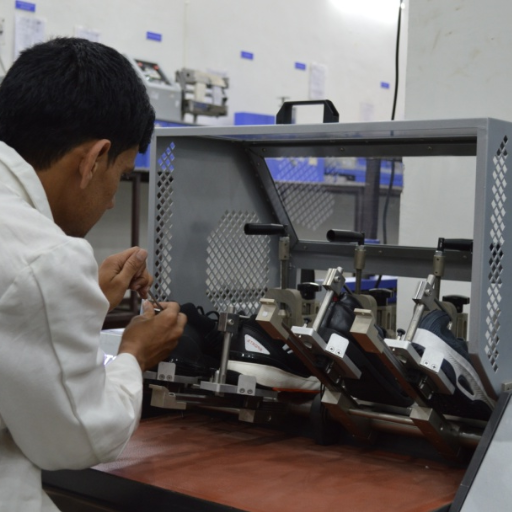
Footwear testing is critical to ensuring the safety, durability, and overall performance of shoes. It helps verify that the product meets industry standards and regulatory requirements while aligning with consumer expectations. Testing evaluates a shoe’s ability to withstand daily wear and tear, maintain comfort, and perform as intended under various conditions. By identifying potential flaws or weaknesses during development, footwear testing minimizes risks to users and enhances the product’s reliability and lifespan. Ultimately, it is an essential process for delivering high-quality, trustworthy footwear.
Understanding Footwear Compliance Standards
Footwear compliance standards are essential to ensure products meet safety, quality, and environmental regulations globally. Common standards include the REACH regulation in Europe, which restricts harmful chemicals, and the CPSIA (Consumer Product Safety Improvement Act) in the United States, which requires testing for lead and phthalates in children’s footwear. Additionally, ISO standards, such as ISO 20345 for safety shoes, outline minimum performance and protective requirements. Compliance also involves adherence to labeling laws, including proper country of origin marking and material composition disclosures. Meeting these standards not only ensures consumer safety but also allows products to enter key markets while fostering trust and credibility among buyers.
How Footwear Inspection Ensures Safety
Footwear inspection ensures safety by systematically evaluating products against regulatory, functional, and performance criteria. Key areas of inspection include dimensional accuracy, material composition, physical performance, and chemical compliance. These inspections identify defects or non-conformities that may pose risks to end-users and prevent products from failing in critical situations. Below are some of the technical parameters involved in ensuring footwear safety:
1. Dimensional Accuracy
-
- Size tolerance: ± 5 mm
- Symmetry of shoe dimensions to ensure balance and proper fit
- Material Composition
- Heavy metal content compliance (e.g., lead < 90 ppm, cadmium < 100 ppm)
- Phthalates in PVC components < 0.1%
- Physical Performance
- Flexing resistance for soles (100,000 cycles without cracking as per ISO 17707)
- Abrasion resistance (maximum volume loss of 150 mm³ for PU soles according to ISO 4649)
- Slip resistance (coefficient of friction ≥ 0.28 for SRA testing as per ISO 20344)
- Chemical Compliance
- Restricted Substances List (RSL) compliance to ensure safety against harmful chemicals
- Formaldehyde content < 75 ppm for textiles and leathers
- Labeling and Marking Integrity
- Accurate size, material, and origin labeling adhering to market-specific legislation
- Proper safety markings for protective footwear (e.g., steel toe or puncture-resistant sole certifications).
By adhering to these parameters during inspection, manufacturers can mitigate risks, ensure regulatory compliance, and deliver safe, durable, and reliable footwear to consumers.
The Role of Certified Footwear in the Industry
- Ensures Regulatory Compliance
Certified footwear meets all necessary legal and regulatory requirements, including safety and quality standards, ensuring products are authorized for sale in various global markets.
- Enhances Consumer Safety
By undergoing rigorous testing and certification processes, certified footwear offers enhanced protection against workplace hazards, such as heavy impacts, electrical risks, and chemical exposure.
- Builds Brand Credibility
Manufacturers that produce certified footwear demonstrate a commitment to quality and safety, which strengthens brand trust and fosters consumer loyalty.
- Supports Industry Standardization
Certification promotes uniformity across the industry, making it easier for suppliers, retailers, and consumers to identify footwear that meets established performance and safety benchmarks.
- Facilitates Market Access
Certified footwear gains easier entry into international markets, where compliance with specific certification standards is mandatory for import and distribution.
How Does Footwear Inspection Work?
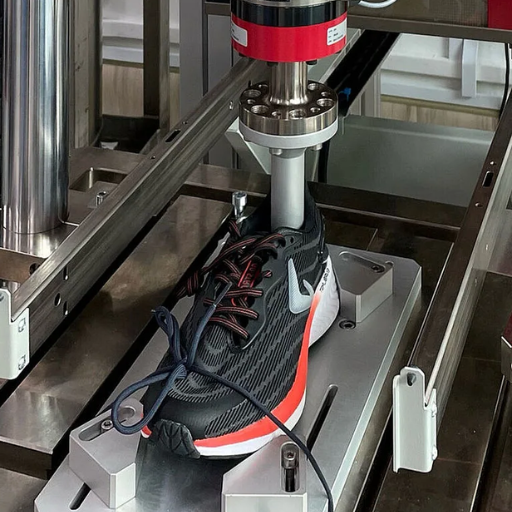
Footwear inspection involves a systematic evaluation process to ensure products meet predefined quality, safety, and performance standards. The process typically includes visual inspections for material defects, structural integrity, and craftsmanship, as well as functional tests to assess durability, flexibility, and comfort. Specialized equipment may be used to test factors such as slip resistance, abrasion, and water resistance. Inspections are conducted during various stages of production, including pre-production, mid-production, and final output, to identify and address issues early. Compliance with certification standards is verified during this process, enabling manufacturers to meet regulatory requirements and maintain customer satisfaction.
Key Parameters in Footwear Inspection
1. Material Quality
-
- Durability: Assess tensile strength, tear resistance, and elasticity based on ASTM D5034 or ISO 13934-1 standards.
- Abrasion Resistance: Test upper material and soles using methods such as ISO 20344 or ASTM D3886.
- Slip Resistance
- Verify using SATRA TM144 or ASTM F2913 standards to measure coefficient of friction on various surfaces.
- Sizing and Fit Accuracy
- Inspect length, width, and height alignment against size specifications. Tolerances should fall under ±1-2mm depending on design requirements.
- Water Resistance (if applicable)
- Perform hydrostatic tests per ISO 20344 for waterproof footwear or water penetration methodologies for standard categories.
- Adhesive Bonding Strength
- Assess outsole-to-upper strength using peeling tests outlined in ASTM D1876 or EN 20344 guidelines.
- Color Fastness
- Evaluate resistance to rubbing, light, and washing with ISO 105-X12 standards to ensure longevity of appearance.
- Weight Consistency
- Ensure uniformity across all pairs using precision scales, with deviation limits between ±3% to ±5% depending on product type.
- Structural Integrity
- Flexing tests such as SATRA TM92 to evaluate resistance to repeated bending for sole durability and stress endurance.
These parameters allow manufacturers to ensure robust, regulatory-compliant footwear while enhancing customer trust through high-quality production.
Analyzing the Sole and Heel for Durability
Key Factors in Sole and Heel Durability Analysis
When analyzing the durability of soles and heels, I would focus on specific stress tests and material evaluations. High-quality soles must undergo rigorous flexing tests, such as SATRA TM92, which assesses resistance to continuous bending stress. Additionally, abrasion resistance is critical, often measured through tests like DIN 53516, ensuring longevity against wear from friction. For heels, structural integrity is paramount; compression and impact tests are applied to verify their ability to withstand repeated loads without deformation or failure. Leveraging standards and tests outlined by industry leaders ensures the footwear’s durability and compliance with regulatory benchmarks.
Inspecting the Insole for Comfort and Support
The insole plays a crucial role in delivering both comfort and biomechanical support, directly influencing the wearer’s experience and foot health. When evaluating insoles, key factors such as material composition, arch support, and cushioning effectiveness must be considered. High-quality insoles often use memory foam, EVA, or gel-based materials to evenly distribute pressure, reduce impact shock, and enhance comfort during prolonged use. Proper arch support is particularly critical, as it aids in maintaining natural alignment, reducing strain on the plantar fascia, and preventing conditions like flat feet or plantar fasciitis. Additionally, insoles should exhibit moisture-wicking properties and antimicrobial treatments to maintain hygiene and minimize odor accumulation. Rigorous bending, compression, and durability testing ensure the insole retains its supportive attributes over time while maintaining structural integrity under repeated use. Selecting insoles designed to match specific foot shapes and activity levels ensures optimal performance and user satisfaction.
What Are the Essential Tests for Shoe Safety?
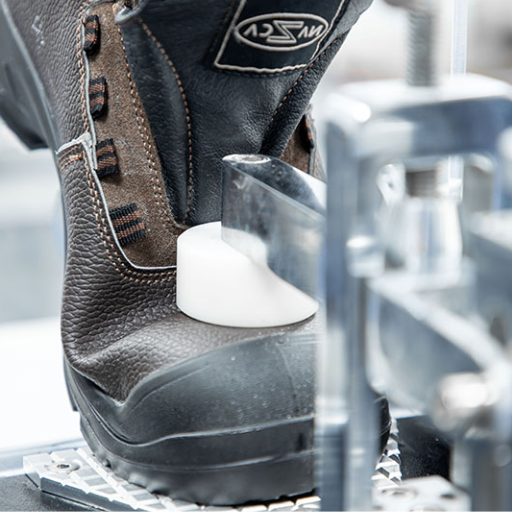
To ensure comprehensive shoe safety, essential tests include slip resistance, impact resistance, compression testing, sole durability, chemical resistance, and thermal stability.
|
Test |
Parameter |
Purpose |
|---|---|---|
|
Slip resistance |
Friction |
Prevent slips on various surfaces. |
|
Impact resistance |
Shock absorption |
Protect against heavy impacts. |
|
Compression testing |
Load bearing |
Assess resistance to pressure. |
|
Sole durability |
Wear |
Evaluate lifespan under use. |
|
Chemical resistance |
Material strength |
Ensure resistance to chemicals. |
|
Thermal stability |
Heat tolerance |
Maintain performance in heat. |
Understanding Slip Resistance Tests
Slip resistance tests are designed to measure the frictional properties of a surface or material under specific conditions, ensuring safety and usability in various environments. Most commonly, these tests involve determining the coefficient of friction (CoF), which quantifies the force required for an object to slide across a surface divided by its weight. Various methods are used, such as the Pendulum Test, which uses a swinging arm to simulate slipping, or the Ramp Test, where an incline is adjusted to measure the angle at which slipping occurs. Both static and dynamic friction are often evaluated to account for real-world scenarios.
The results of slip resistance tests are critical for preventing incidents, especially in industrial, public, or high-traffic settings. Standards such as ASTM, ANSI, and ISO provide guidelines on acceptable thresholds for specific surfaces. Selection of the appropriate testing method depends on the material being assessed, environmental factors (e.g., wet or dry conditions), and regulatory requirements. These evaluations ensure that surfaces meet both safety and durability standards while mitigating risks of slips or falls.
Testing for Impact Resistance and Protection
Impact resistance testing evaluates a material’s ability to withstand sudden forces or shocks without fracturing or deforming. This is critical in applications such as construction, automotive, and aerospace industries where safety and material integrity are non-negotiable. Common testing methods include the Charpy and Izod impact tests, which measure the energy absorbed by a material during fracture, typically in units of joules (J).
Key Technical Parameters to Consider:
- Energy Absorption (J): Indicates the material’s toughness and resistance to impact.
- Impact Velocity (m/s): The speed at which an object contacts the material, simulating real-world conditions.
- Test Temperature (°C/°F): Evaluates material performance under varying thermal conditions, important for materials used in extreme environments.
- Specimen Dimensions (mm): Ensures consistency and repeatability of tests across samples.
- Material Hardness (e.g., Rockwell or Vickers scales): Provides additional insight into potential vulnerability to cracking or deformation.
The results of these tests enable engineers to determine the suitability of materials for specific applications, ensuring compliance with standards such as ASTM D256 or ISO 179, which govern impact resistance. This level of evaluation is essential for maintaining safety, reliability, and performance in high-stakes environments.
The Importance of Arch Support and Stability Testing
Arch support and stability testing is critical for evaluating the performance, durability, and biomechanical efficacy of footwear. Proper arch support helps in distributing pressure evenly across the foot, which minimizes strain on muscles, tendons, and joints. Stability testing, on the other hand, ensures that footwear provides adequate balance control and reduces the risk of injury for individuals during activities like walking, running, or prolonged standing.
From a technical perspective, arch support can be analyzed through parameters such as arch height, stiffness index, and contact surface area. Typical arch heights range between 30-50 mm depending on foot type (low arch, medium arch, or high arch). The stiffness index, often measured in Newton-millimeter (N·mm), evaluates the resistance of the sole to deformation under load. For stability testing, metrics such as heel counter stiffness (expressed in Newtons), outsole traction coefficients, and the lateral stability angle (measured in degrees, typically above 75° for optimal performance) are key indicators.
Advanced methods for testing include dynamic pressure mapping, which identifies pressure imbalances across the foot during movement, and force plate analysis, used to assess gait stability and load distribution. Adherence to standards like ASTM F2913 for traction and ISO 22675 for biomechanical testing ensures the footwear performs reliably under real-world conditions.
By addressing these technical parameters, manufacturers can refine their designs to improve wearer comfort, reduce injury risk, and enhance overall biomechanical function.
How Does Gait Analysis Affect Shoe Design?
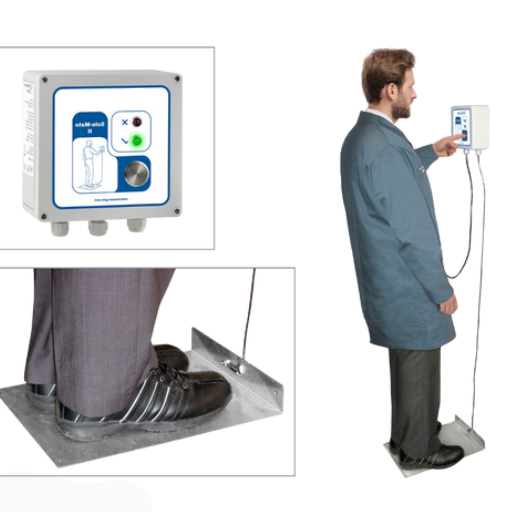
Gait analysis plays a critical role in shoe design by providing detailed insights into how individuals move and interact with the ground. Through the evaluation of parameters such as step length, stride frequency, pronation patterns, and joint alignment, designers can create footwear that caters to specific biomechanical needs. For instance, identifying overpronation or supination helps in developing shoes with appropriate arch support and midsole cushioning, reducing the risk of injuries. Additionally, data collected from gait analysis informs the structural design of outsoles, improving traction and stability. This evidence-based approach ensures that the final product aligns with the functional and ergonomic demands of the wearer.
Understanding Different Gait Patterns
Understanding different gait patterns involves recognizing primary types such as neutral gait, overpronation, and supination, each defined by the unique way the foot strikes and distributes weight during motion.
|
Gait Pattern |
Key Feature |
Foot Strike |
Weight Distribution |
Risk Factor |
|---|---|---|---|---|
|
Neutral Gait |
Balanced motion |
Midfoot |
Evenly spread |
Low |
|
Overpronation |
Excessive inward |
Inner foot |
Inner edge |
High |
|
Supination |
Excessive outward |
Outer foot |
Outer edge |
Moderate |
The Impact of Pronation on Running Shoe Design
When considering the impact of pronation on running shoe design, it is critical to align the shoe’s structure with the runner’s specific gait pattern. For individuals with neutral gait, running shoes generally prioritize balanced cushioning and minimal motion control since the weight is distributed evenly. For overpronators, stability or motion control shoes are essential; they often feature firmer medial posts or guide rails to counteract the excessive inward roll of the foot, thereby reducing injury risk. Supinators, on the other hand, require high-cushion running shoes with enhanced flexibility and shock absorption, as their feet tend to underutilize the natural cushioning provided by the inner edge. By tailoring shoe designs to address these biomechanical differences, manufacturers ensure optimal support, comfort, and performance for every runner.
Using Biomechanics to Improve Shoe Performance
When designing shoes using principles of biomechanics, I focus on understanding the functional mechanics of the human foot during various activities. For example, the top-performing resources emphasize analyzing gait cycles to determine pressure points, pronation levels, and overall stride efficiency. These insights help me prioritize features such as arch support, sole flexibility, and precise cushioning placement. Additionally, I take into account the material composition and durability to ensure they align with the wearer’s specific biomechanical needs, leading to enhanced comfort and injury prevention across diverse use cases.
What Role Does Footwear Testing Play in Preventing Injuries?
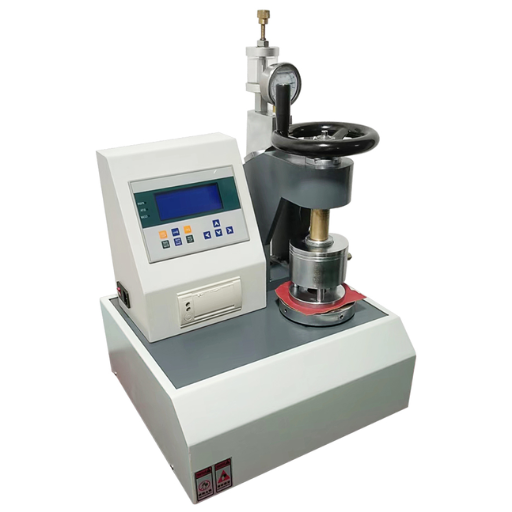
Footwear testing plays a critical role in preventing injuries by identifying potential design flaws and ensuring the shoe provides adequate support, cushioning, and stability. Through biomechanical assessments and material performance evaluations, testing helps ensure that footwear aligns with the physiological demands of the wearer. This process minimizes stress on joints, reduces the risk of overuse injuries, and enhances overall movement efficiency. Comprehensive testing ensures the product meets the necessary standards for durability and functionality, ultimately safeguarding the user from both acute and chronic injuries.
The Connection Between Foot Care and Injury Prevention
Proper foot care is integral to injury prevention and overall biomechanical health. Key aspects of effective foot care include maintaining hygiene, ensuring appropriate support, and regularly assessing footwear integrity. Technical parameters for injury prevention include evaluating arch support to match the individual’s foot type (low, neutral, or high arch), heel cushioning with an optimal thickness range of 10-15mm to absorb impact forces, and torsional rigidity to control foot motion, typically quantified as a resistance threshold of 30-50 Nm. Ensuring a proper fit is critical, with shoe width and length accommodating at least 1-1.5 cm of toe space to avoid compression injuries. Regular monitoring for wear patterns, such as excessive midsole compression or outsole deterioration, can preempt biomechanical inefficiencies that contribute to pain or injury. By addressing these parameters, foot care can significantly reduce the risk of plantar fasciitis, stress fractures, and other common overuse injuries.
How Protective Footwear Reduces Workplace Hazards
Protective footwear is a critical component in mitigating workplace hazards by offering specialized features designed to minimize injury risks across various industries. Safety shoes and boots are often mandated in hazardous environments to ensure compliance with occupational safety standards, such as OSHA (Occupational Safety and Health Administration) regulations. Key attributes of protective footwear include steel or composite toe caps, slip-resistant soles, puncture-resistant midsoles, and electrical hazard (EH) protection, each tailored to address specific occupational threats.
- Toe Protection: Steel or composite toe caps shield the toes from impact and compression injuries. According to ASTM F2413-18 standards, toe caps must withstand impacts of up to 101.7 joules and compression forces of up to 2500 pounds.
- Slip Resistance: Slip-resistant outsoles are designed with specialized tread patterns and rubber compounds to improve traction on slippery surfaces. Coefficient of friction testing ensures the shoes meet industry requirements to prevent falls.
- Puncture Resistance: Protective midsoles, often made from steel or aramid fabric, resist penetration by sharp objects such as nails or glass. For effectiveness, the midsoles must comply with ISO 20345 standards, capable of withstanding a penetration force of at least 1100 newtons.
- Electrical Hazard Protection: EH-rated footwear provides insulation against electrical shocks up to 18,000 volts under dry conditions, addressing risks for electricians and technicians working near live circuits.
- Metatarsal Guards: Some designs incorporate guards over the metatarsal area to protect against heavy object drops, further reducing foot injuries in industrial settings.
By employing these technical parameters, protective footwear minimizes the impact of workplace hazards, ensuring both compliance with regulatory standards and the safety of employees across diverse occupational environments. Regular inspection and replacement of footwear are essential to maintaining its protective efficacy.
Reference Sources
- Footwear Laboratory Testing for Safety & Performance
- Footwear Inspection Quality Control PDF: Top Tips 2024
- Footwear testing, research and consultancy by SATRA
- Testing Methodology by RunRepeat
- Top Footwear Testing Machine in China
Frequently Asked Questions (FAQs)
Q: Why is footwear testing crucial for ensuring quality and safety?
A: Footwear testing is essential to analyse the forefoot and rearfoot dynamics, ensuring that new footwear meets safety regulations and provides comfort. This process helps brands and retailers deliver shoes that feel right and prevent issues such as diabetic foot ulceration, which is a significant concern for therapeutic footwear.
Q: What specific aspects of a shoe are tested during the footwear testing process?
A: The testing process involves an analysis of the footprint, baropodometric measurements, and the shoe’s posture support. It also examines the shoe’s effects on the lower limb and the center of pressure during movement, ensuring that the finished product is safe and comfortable for the user.
Q: How does footwear testing help in preventing diabetic foot ulceration?
A: By conducting a foot test and analysing kinetic factors and the stance phase, footwear testing can identify potential issues that might lead to diabetic foot ulceration. Therapeutic footwear can then be designed or altered to prevent such complications, maintaining foot health.
Q: What is the importance of the walking surface in footwear testing?
A: The walking surface plays a critical role in the testing process as it affects the shoe’s performance. Different surfaces can alter the center of pressure and the stance phase, influencing the shoe’s overall effectiveness. Testing on various surfaces helps ensure the shoe performs well in real-world conditions.
Q: How do previous studies and controlled trials contribute to the footwear testing process?
A: Previous studies and controlled trials provide a comparative analysis of different kinds of shoes, offering statistically significant data that inform the testing process. This data helps validate the testing methods and hypotheses about shoe performance and safety.
Q: How is baropodometric data measured during footwear testing?
A: Baropodometric data is measured using specialized equipment that records the pressure distribution across the foot while walking. This data helps in understanding how different foot types interact with the shoe and can highlight areas requiring alteration for improved comfort and safety.
Q: What role does the analysis process play in determining the validity of footwear testing results?
A: The analysis process involves reviewing and interpreting data collected from various tests, including footprint and baropodometric analysis. It ensures that the results are statistically significant and relevant, providing insights that guide the design and development of safer, more comfortable shoes.
Q: Why is it important to consider both barefoot and shod conditions in footwear testing?
A: Testing both barefoot and shod conditions allows for a comprehensive understanding of how shoes alter natural gait patterns. This comparison helps identify any limitations or alterations needed to improve the shoe’s design, ensuring it supports natural movement without causing discomfort.
Q: How can footwear testing address the needs of individuals with different foot types?
A: Footwear testing considers various factors such as the forefoot and rearfoot dynamics, as well as the medial and lateral support needed for different foot types. By analysing these factors, brands can develop shoes that accommodate different foot structures, enhancing comfort and performance.
Q: What is the significance of the center of pressure in footwear testing?
A: The center of pressure is a crucial metric in footwear testing as it indicates how weight is distributed across the foot during movement. Understanding this can help improve shoe design by ensuring even pressure distribution, reducing the risk of injury, and enhancing comfort.






